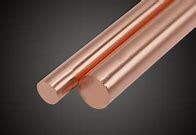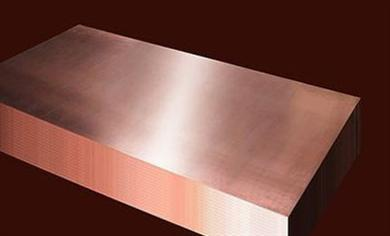Phosphorus copper, also known as phosphor bronze or tin phosphor bronze, is composed of bronze with added degassing agent phosphorus P content of 0.03-0.35%, tin content of 5-8%, and other trace elements such as iron Fe, zinc Zn, etc. Phosphorus is used to remove oxygen from pure copper and bronze (Cu Sn), leaving behind a small amount of phosphorus, and to improve mechanical properties such as toughness, elasticity, wear resistance, and corrosion resistance by adding 1% phosphorus to the C copper alloy.

Phosphorus Bronze Copper Wire
Tin phosphorus bronze is an alloy copper with good electrical conductivity, low heat generation, ensuring safety, and strong fatigue resistance. The socket spring of tin phosphorus bronze has a hard-wired electrical structure with no rivet connection or friction contact, ensuring good contact, good elasticity, and smooth insertion and removal. This alloy has excellent mechanical processing and chip-forming properties, which can quickly shorten the processing time of parts.
Phosphorus bronze has higher corrosion resistance and wear resistance and does not produce sparks during impact. Used for medium-speed and heavy-duty bearings, with a maximum operating temperature of 250 ℃. It has the characteristics of automatic centering, insensitivity to deflection, uniform bearing capacity of the shaft, high bearing capacity, and can withstand radial loads simultaneously. It is self-lubricating and does not require maintenance.
Excellent flexibility and fatigue resistance, suitable for electrical and mechanical materials, with corrosion resistance and material reliability higher than general copper alloy products. Made by continuous melting casting (plate, copper coil), it has a high degree of material uniformity.
Phosphorus copper material is mainly used for phosphorus copper mesh using weaving technology, with good corrosion resistance, wear resistance, conductivity, fatigue resistance and other characteristics. It is mainly used for screening various particles, powders, porcelain clay, glass and filtering liquids, gases, etc., and is widely used in mining, metallurgy, construction, pharmaceuticals, papermaking and other industries.
It is mainly used as wear-resistant parts and elastic components in industry. Boards and strips are used for springs, switches, lead frames, connectors, vibration plates, bellows, fuse clips, bushings, etc., in electronic and electrical devices, especially for springs that require high-performance elasticity. Castings are used for gears, worm gears, bearings, bushings, sleeves, blades, and other general mechanical components.
Inquiry us
If you want to want to know more, please feel free to contact us. (nanotrun@yahoo.com)

